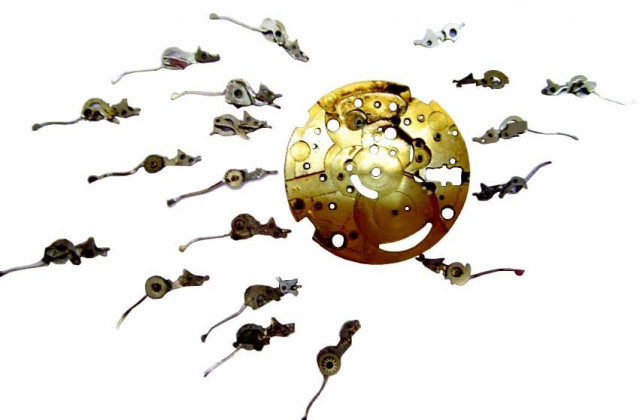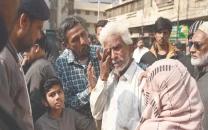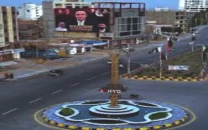Packaged, yet not wholly delivered
“Good Things Come In Small Packages” aimed to let audiences appreciate the works of 21 artists at one exhibition.

Packaged, yet not wholly delivered
While the price range was modest - spanning between Rs2,000 and Rs15,000 - the title was unable to justify all the pieces at the exhibition that started at the Indus Valley School Gallery on August 5.
The works, which were created in an exciting spectrum of experimental mediums as well as the customary use of paint, clay, inks and film, struggled to coalesce as a show. Instead, the exhibition boasted sporadic bursts of brilliance, punctuated by some pieces that whimpered with just a passable use of technique.
Among the pieces that truly stand out is a series by Abdullah MI Syed, titled “Forbidden Fruits”. He uses half-unstitched cricket balls and Perspex (transparent thermoplastic) to create a body of work that builds on his “Anthology of Pomegranates” drawings. They explore the masculine identity through notions of violence, conflict, sexuality, consumption, humiliation and triumph.
For Syed, the use of a cricket ball addresses the origins of the sport and the idea of it being a “gentleman’s game” - at that time the British elite. It also plays on the visual connection between the colour of the ball and its resemblance to an “anaar” - which refers to the fruit as well as the local term for “fireworks”.
Similarly exciting is SM Raza’s use of soap bars to create human faces. He uses human hair to stamp faces onto a product that used by everyone. This is his way of commenting on the differences between genders. Soap bars of different colours and shapes make each piece a study of the qualities that separate and at the same time unite people.
Sohail Abdullah photographs insects on a light table with an analogue camera, macro lens, and strobes. The negatives are scanned to create digital files which are used to generate enlarged digital negatives. These negatives are inkjet printed on to transparencies and the negatives are used to contact print on an acid-free postcard made photosensitive with ferric salts. The “blue-prints”, once finished, are bleached and toned in a Tannin solution to create postcards. This is how Abdullah attempts to unite the idea of handmade artwork and manufactured consumer goods, creating novel, affordable, and usable art.
Rabeya Jalil’s “Tolet” series aims to break the conventions of working on canvas and then framing it, only to be seen from a particular distance that makes art untouchable. Jalil questions the “immaculacy” and “sacredness” of artwork which becomes inaccessible under its “framed fortification” for those who may otherwise appreciate it.
Nosheen Iqbal used metal parts from watches to create gold-tinted compositions that glowed with life, while Fraz Mateen, Nabahat Lotia, Fariha Nadir and Ambreen Hameed contributed in clay, canvas, ceramics, metal and other experimental mediums to highlight their concerns regarding religion, survival, energy and resilience.
Works by Roohi Ahmed, Noor Yousof, Sahar Jawaid, Saman Ali, Ammad Tahir, Raheela Abro, Sana Burney, Masuma Halai Khawaja, Faiza Habib, Abeerah Zahid, Sophia Mairaj and Samar Zaidi were also part of the exhibition that will go on till Saturday, August 28.
Published in The Express Tribune, August 12th, 2010.











1733130350-0/Untitled-design-(76)1733130350-0-208x130.webp)







COMMENTS
Comments are moderated and generally will be posted if they are on-topic and not abusive.
For more information, please see our Comments FAQ